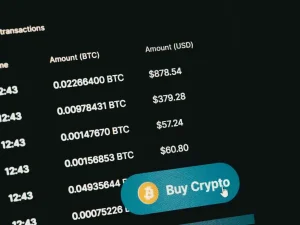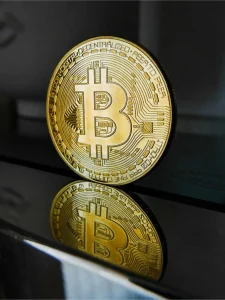Over the past few years, the digital asset industry has experienced an overhauling change by adopting non-fungible tokens (NFTs). Marketplaces are at the heart of this revolution and act as platforms for the buying and selling and even trading in of the assets. This popularity spike means a wholesale change of mind regarding the concept of ownership and value that dominates the digital world.
Understanding NFTs
The Function of NFT Marketplaces

- Minting and Listing: Users interested in purchasing artwork can resell it by converting it into NFT then listing them on the marketplace. Minting is the process of launching an NFT on the blockchain and may attract a small gas fee for facilitating the transaction. They are uploading the digital file, creating metadata about the good, and establishing some conditions governing its resale, say royalty every time it is to be resold.
- Buying and Selling: A buyer is able to search through the marketplace, bid on an NFT or purchase it directly. Sellers can directly provide a price for their products or they can sell their products by auction and let the customers decide the price of the digital assets. Most marketplaces provide utility in featuring the artwork, as well as writing descriptions and engaging with potential customers.
- Trading and Collecting: These central marketplaces help collectors and investors to create an NFT collection or generate revenue, based on trading. The value of every NFT increases because of scarcity, popularity, and the ability of the creator behind the token. Affiliate websites, in turn, provide historical transaction data as a basis of referencing price changes to make sound decisions.
- Royalties and Smart Contracts: NFTs boast a groundbreaking feature: embedding royalties into the smart contracts governing them. This allows artists to earn a percentage with every resale.
Impact on Artistss and Creators
- New Revenue Streams: A significant benefit that NFT marketplaces afford artists is the bypass of the middleman through which value is easily siphoned. The conventional art business is characterized by costly brokers and commissions, but NFT usually avoids intermediaries, leaving more profits to the artist.
- Global Reach: NFT market places are run online and that helps the artists make their art work available to the world.
- Creative Freedom: This means that artists are not confined to the physical form of conventional bearer of art information. They can engage with new media, learn about works of art which are digital and Interactive and work on multimedia projects and much more.
- Continuous Royalties: Incorporating royalties in NFT intelligent contracts ensures artists earn from the second hand market. Every time an NFT is resold that was previously sold, the original creator is paid some percentage of that amount which gives creators long term income and appreciation.
Challenges and Criticisms

- Environmental Concerns: Ethereum used for the creation of the NFTs consumes a lot of power, hence raising concerns of environmental conservation. Attempts are being made to make such changes environmentally friendly, for example, through Ethereum 2.0 and other forms of the proof of stake but it is still a hotly debated topic.
- Market Volatility: Due to its high risk the prices of most NFTs are marred under speculation hence experiencing extreme fluctuations in value. This fluctuation can result in rather high risks for creators and investors, therefore people can lose large sums of money if something in the market turns out to be undesirable.
- Intellectual Property Issues: This has been facilitated by the relatively ease in creating digital assets hence plagiarism and copyright infringement. These problems persist and affect NFT marketplaces’ policies and technologies, regulation of which is still a challenging task.
- Accessibility and Technical Barriers: Although NFT marketplaces have emerged recently and have introduced new prospects, they can be rather numerous and challenging even for inexperienced people. The creation of a digital wallet, investing in cryptocurrencies, as well as understanding cryptocurrencies, tokenization, and trading can be unapproachable for beginners with no background in blockchain systems at all.
- Scalability and Network Congestion: With high trade activities in NFTs, several broadcasted blockchain networks may thus be slowed down by many transactions and similarly demanding charges for processing these transactions. There are solutions in the works for scalability but they are not fully implemented or practiced across the board.
The Future of NFT Marketplaces
- Integration with the Metaverse: Marketplace becomes an influential part of the metaverse idea where NFT plays an essential part as the thought takes form. Virtualvents and CGI will be using NFT for products and services availed in the virtual space, land, and identification services. These reliance shall help in the creation of new economic environment, and digital economy and commerce.
- Broader Adoption Across Industries: All existing examples of NFTs are currently more than art and collectibles, although they are actively tested in different industries, including gaming, fashion, music, and sports. These applications can thus offer fresh monetisation possibilities and customer relationships, like virtual goods, gameplay objects, and content.
- Improved User Experience: Over a period of time, with changing innovations, NFT marketplace will get efficient in terms of purchasing and selling of these digital assets and will involve trade as well. Improved interfaces, accumulating content, and reduced restrictions will consequently bring more people into the NFT market.
- Regulatory Developments: Though NFT is relatively new, the regulatory measures are also expected to change with its growth. The main implications of having more obvious policies and rules are always to safeguard the customer, cracking down on frauds, and guaranteeing market fundamentals hence enabling efficiency, dependability, and stability on the NFT market.
- Sustainable Practices: Sustainability issues will be the main force behind development in eco-friendly blockchain solutions. Specifically, marketplaces and platform should minimise energy consumption, that is the most critical point and reason for criticisms.
Conclusion
NFT marketplaces head that digital transformation by world’s redefining property, worth, and commercial life. It can be said they mark a new way of communication and transaction. NFT marketplaces cope with the market and become successful in the digital economy due to problems and opportunities on which they focus and which they utilize.














